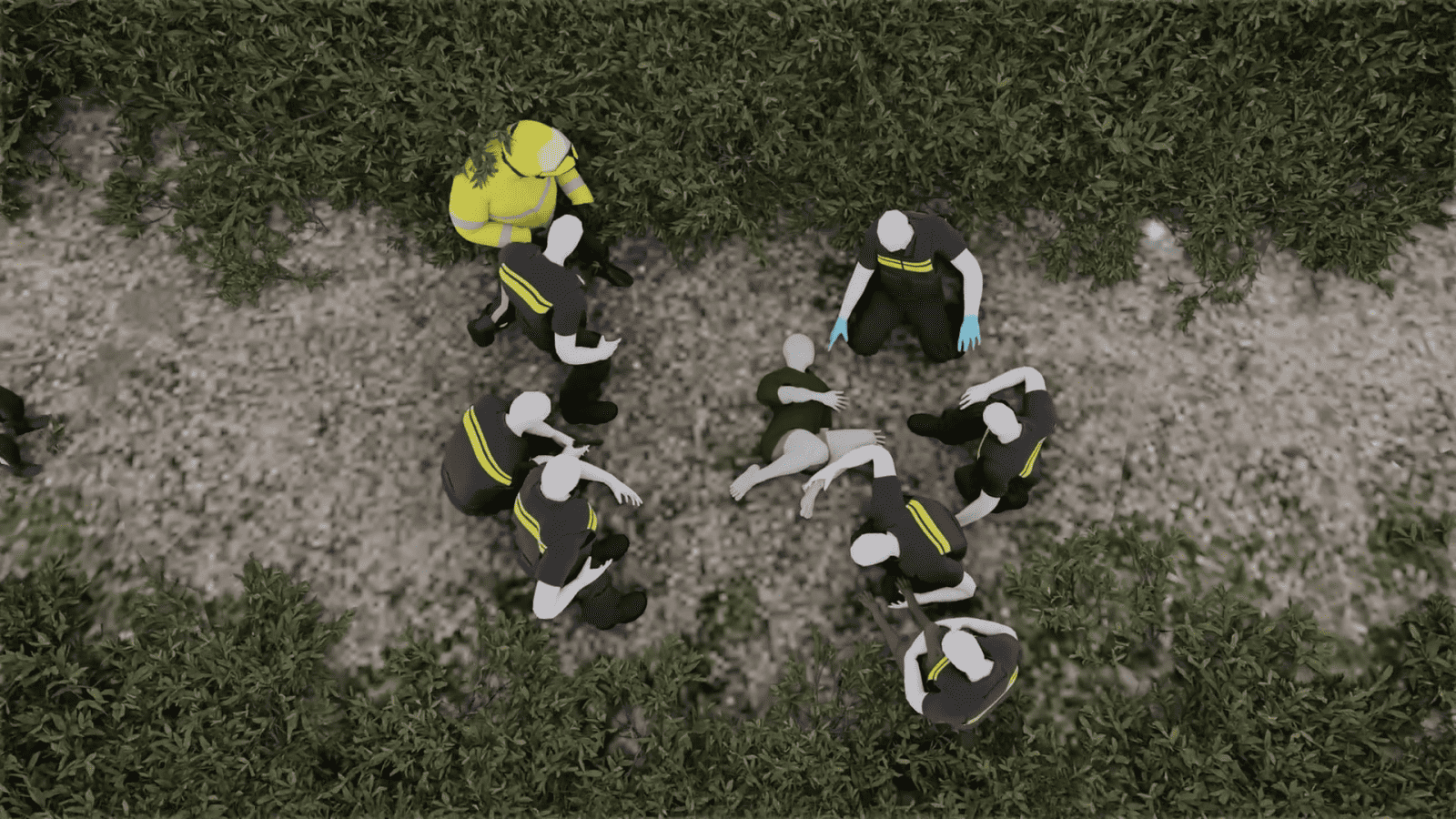
Our interactive story of the last moments before Sammy was killed, published with Argos, can be found here.
View the full methodology report here.
There’s still time to support our ongoing work on this case, through our crowdfunding page.
Sammy Baker visited Amsterdam in August 2020 to celebrate his 23rd birthday. On 10 August Sammy entered a psychosis which lasted for days, likely as a result of ingesting cannabis. On 13 August Sammy’s mother travelled to Amsterdam to help him; she was present, along with a friend of Sammy’s, at the time they first encountered the Amsterdam Police. Sammy, still in psychosis and apparently distressed by the appearance of police officers, ran away. The foot chase which followed began a series of events which led quickly to Sammy’s death.
Sammy was carrying a small, legal, pocket knife, with which he repeated tried to cut himself during the encounter. According to the Amsterdam Police, Sammy was shot to death after attempting to stab an officer with the pocket knife. The public prosecutor for the Netherlands, known as the Openbaar Ministrie or OM, declined to charge the officers, concluding that they acted in self-defence.
However, video evidence suggests the story is more complex, and Amsterdam’s Chief of Police later admitted that no damage was found on any of the officers’ protective vests.
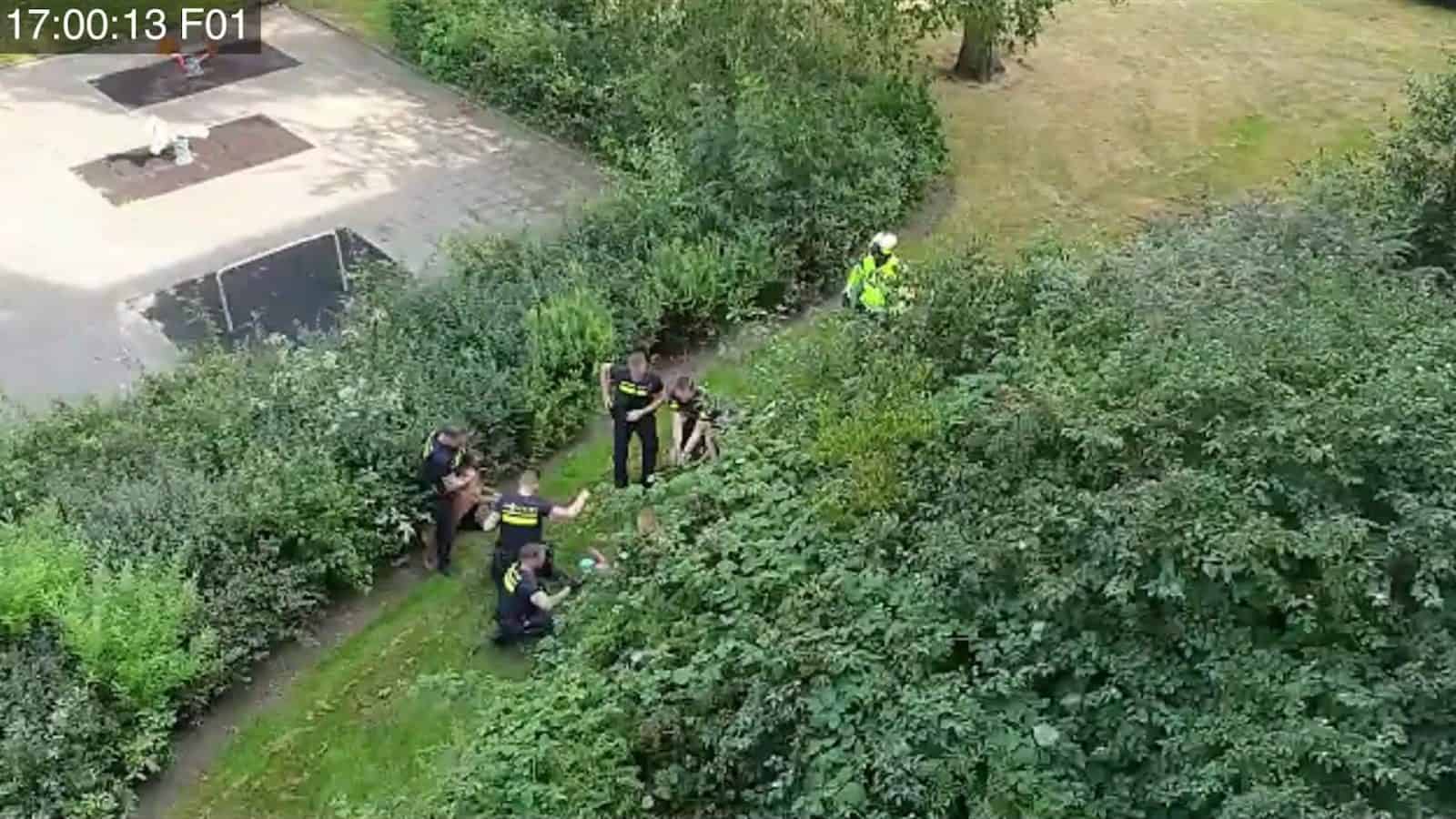
The encounter which ended in Sammy’s death began around 4:45pm on 13 August, in a residential courtyard in Amsterdam-West. After police cornered Sammy near to a high fence, and pepper-sprayed him, nearby residents began to film the scene.
The first videos of their encounter show police officers shouting at Sammy, and pointing their firearms at him. In their testimonies, those officers would later claim that it was clear that Sammy was experiencing a psychosis. Nevertheless, when an ambulance arrived, the paramedics were never allowed to get close to Sammy, to offer him psychiatric or medical support.
Those videos captured vital details about the sequence of events leading to Sammy’s death, including moments which contradicted police testimony. Three officers individually claimed that, seconds before Sammy’s death, a colleague who had tried to physically apprehend the victim had been dragged to the floor with Sammy, who was apparently still holding the small pocket knife.
This could have been a justification for racing to assist their colleague, who might have been in danger. But the video evidence shows that this claim is simply not true. The officer in question – identifiable as he was in charge of a police dog – remains standing throughout the incident, and was never in danger.
The dog handler seeks to physically apprehend Sammy after he first tries to deploy the dog against him. It is unclear what the dog could have achieved, or how its introduction would have helped in the encounter with an individual in mental health crisis.
In any case, Sammy, in an apparently near-catatonic state, was moving so slowly and cautiously that the dog failed to identify Sammy as his ‘target’ at all. Instead, the dog ran past Sammy, dragging the officer into close proximity with him.
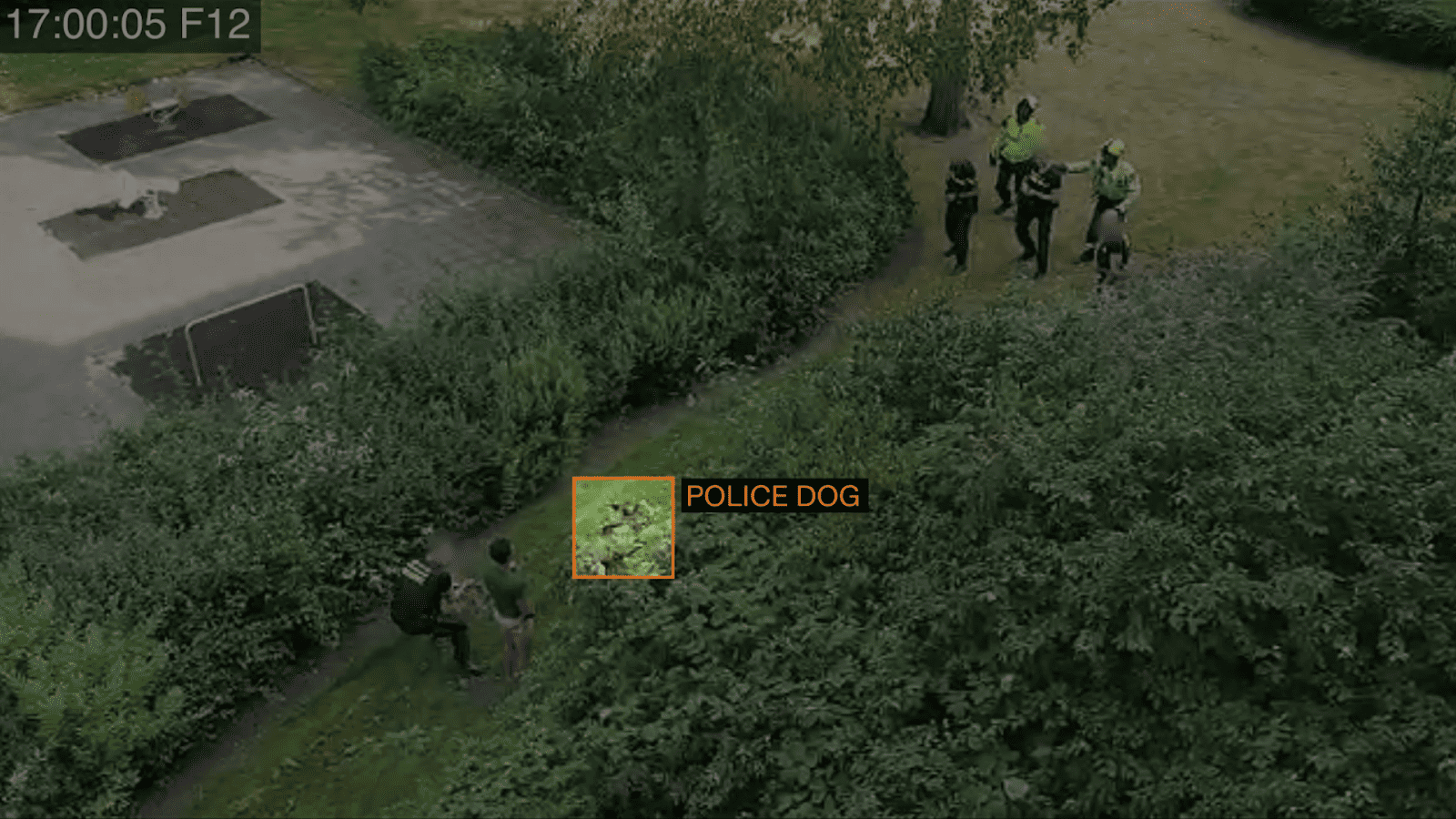
According to his testimony, the dog handler, aware of the knife being held to Sammy’s own neck, assumed at this time that Sammy was likely to stab him, and so tackled him and pushed him to the ground. Sammy was motionless and unresponsive in the moments, facing away from the officer, at the moment he was tackled. This action by the officer set in motion the events that led directly to Sammy’s death.
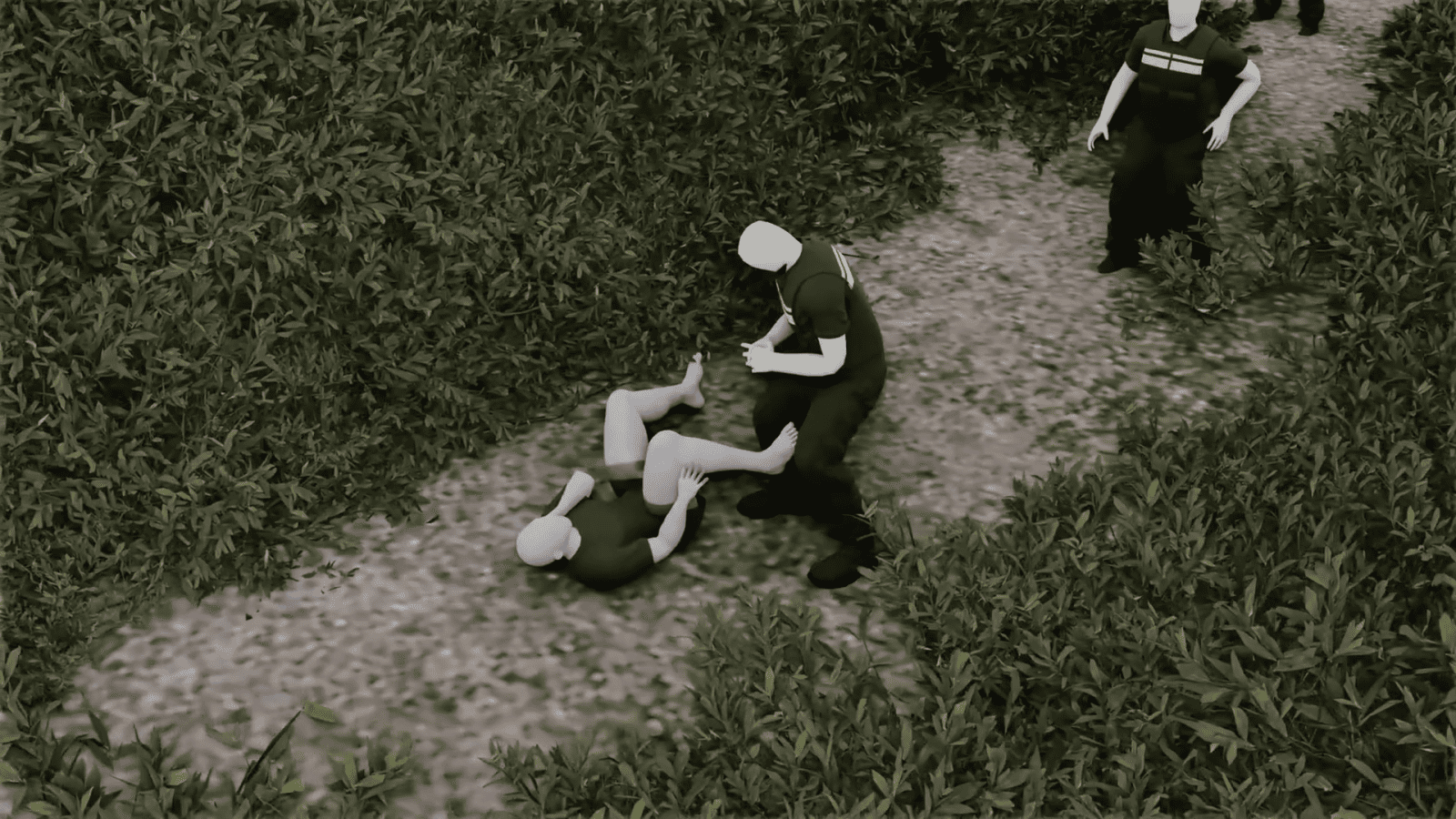
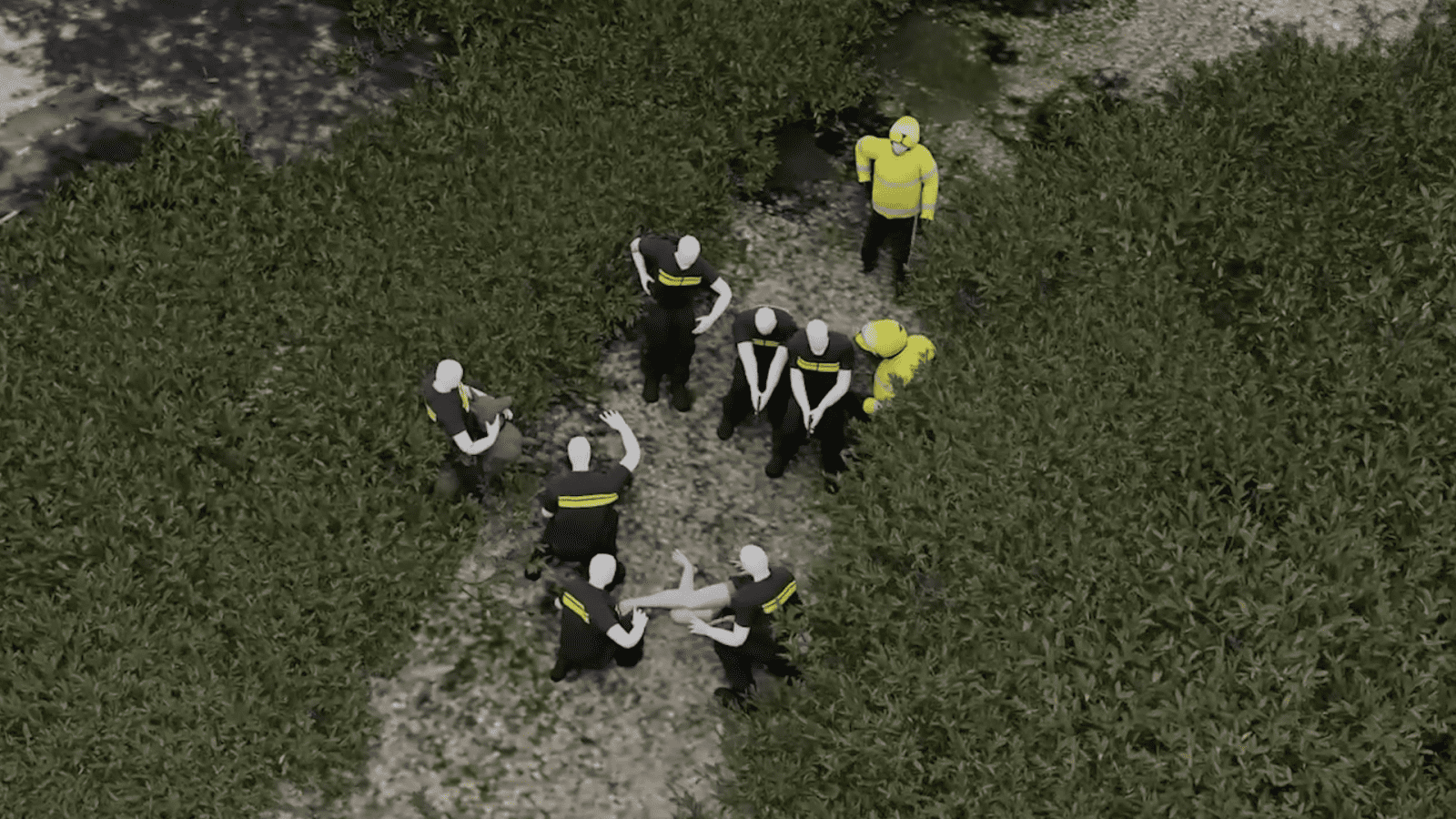
Upon being pushed to the ground, Sammy begins to scream. In video evidence, his legs and arms are at times briefly visible above the thick hedgerows on either side of the path along which he encountered the police, suggesting that he was lying on his back throughout the seconds before he was shot to death.
Understanding Sammy’s body position closely would be key to understanding what, if any, danger Sammy posed to the officers, and to examining their own actions and responses. In order to produce reliable approximations of Sammy’s body position, we iterated repeatedly between camera positions, testing multiple possible body positions that could match to the brief glimpses of Sammy seen in each video source.
Our assessment of Sammy’s approximate body positions throughout is also informed by data from the official pathology reports.
Sammy was shot twice, by two different officers. These shot lines tell us a lot about how Sammy’s body was positioned at the time he was killed.
Particularly, one gunshot passed through his midriff, before coming to rest in his left elbow. This indicates that his body was slightly hunched over onto his left arm, with his left shoulder dropped.
_1.gif)
The result of video analysis, iterative testing of digitally modelled body positions, and the analysis of pathology report data is this conclusion:
– in the moments immediately before Sammy’s death, he was not in a position which was threatening to the officers. He was lying on the ground, on his back; nobody else was on the ground with him.
Further, FA and Forensis concluded the following:
– The officers’ conduct in the minutes before Sammy’s death exacerbated the situation, rather than de-escalating it.
– Officers’ testimony about key parts of the story, including what kind of danger Sammy could have posed, were not consistent with the video evidence. The dog handler did not fall to the ground with Sammy. He did not wave his knife toward officers as he was walking towards them.
– If the officers had taken a step backwards at any time while Sammy was on the ground, they could have removed themselves from any potential danger.
Methodology
Methodology
A full methodology report is being prepared, and will be published soon.
Audio enhancement by Earshot; a not-for-profit organisation dedicated to open source acoustic investigations, and a member of the Investigative Commons.